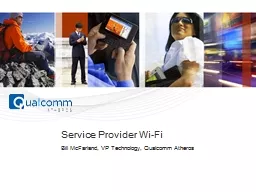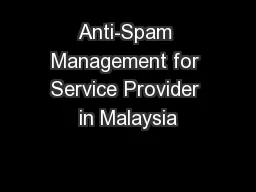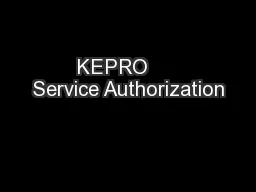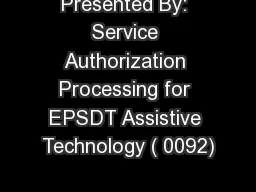PPT-Service Provider Wi-Fi
Author : pamella-moone | Published Date : 2016-05-07
Bill McFarland VP Technology Qualcomm Atheros Outline System capacity discussion 80211u WiFi Hotspot 20 Hybrid LTEWiFi small cells 1000x Capacity Increase Needed
Presentation Embed Code
Download Presentation
Download Presentation The PPT/PDF document "Service Provider Wi-Fi" is the property of its rightful owner. Permission is granted to download and print the materials on this website for personal, non-commercial use only, and to display it on your personal computer provided you do not modify the materials and that you retain all copyright notices contained in the materials. By downloading content from our website, you accept the terms of this agreement.
Service Provider Wi-Fi: Transcript
Download Rules Of Document
"Service Provider Wi-Fi"The content belongs to its owner. You may download and print it for personal use, without modification, and keep all copyright notices. By downloading, you agree to these terms.
Related Documents














